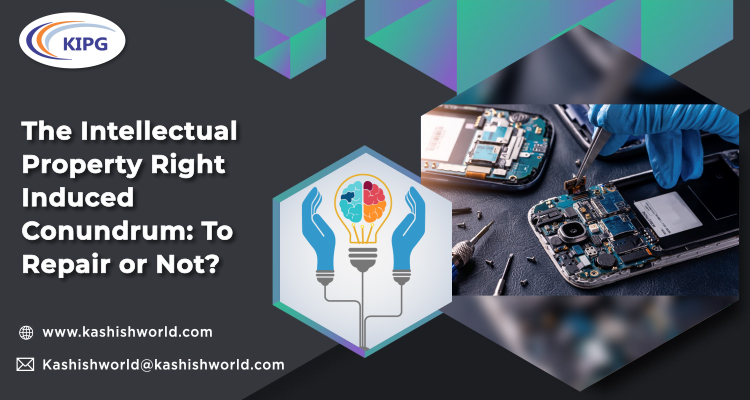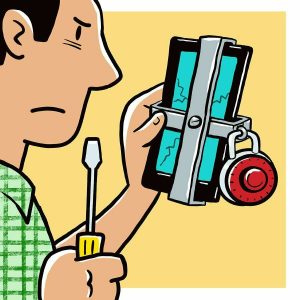
What is the “Right to Repair” Principle?
The “Right to Repair” principle can be understood as a simple concept based on the foundation of ‘freedom;’ the freedom to not just buy a particular product from a range of diverse options in the market but to also choose how to fix the product bought. It means that the buyer shall have the option of fixing his property on his own accord by repairing it himself or choosing the service provider of his choice instead of compulsively routing back to the manufacturer due to the monopoly he exercises over his tools, apparatus, spare parts, and other know-how on the fixing.
Journey from a Principle to a Movement
This principle has slowly emerged into a social movement since it is begun to creep into all industries, with utmost concentration being observed in the electronics sector, including televisions and mobile phones, and the transportation sector.
Consider the anti-repair practices imposed by the launch of the iPhone13, which clearly implies the mobile set is beyond repair if pursued outside the vicinity of an Apple Store. The software may block different features and functionalities of the set unless and until the repair is authenticated by a software exclusive to Apple.

In addition to anti-repair practices, many entities also have oppressive policies of limiting the warranty in case the repair is pursued outside the scope of the manufacturing entity or its authorized dealers. All this is done in the name of the “It may violate our Intellectual Property Rights (IPRs)” placard. The same gives rise to unprecedented monopoly, restriction of consumer rights to make choices, and utmost control over market practices.
The Interplay of IPRs and the Right to Repair
As stated above, the Original Equipment Manufacturers (OEMs) stand on the opposing front to those in support of the Right to Repair principle since they argue that such alien activity may lead to infringement of their Intellectual Property (IP). It may also induce further damage or the risk of damage, which may lead to damage to property or injury to the holder of the goods. There is no straight line drawn on this subject; however, differing points of view have been witnessed. The OEMs include big players like Tesla, Apple, and Microsoft.
In the United Kingdom, the Patent Laws allow repair but not remaking a part. Hence, replacement may be done by a third-party service provider. They have also enacted a regulation that requires OEMs to manufacture spare parts incorporating “electrical appliances” to make them available to consumers. France has also introduced the like step. In the United States, an anti-repair practice would invite Section 4 of the Competition Act, 2002, since such monopoly of the OEMs could mean placing unfettered control of prices in their hand by making repairs as expensive as buying a new product itself.

There is no specific Right to Repair legislation in India as such; however, there have been a handful of instances where the judiciary was confronted with the issue. In the case of Shri Shamsher Kataria v. Honda Siel Cars Limited & Ors., the Competition Commission of India (CCI) strikingly placed it on record that any anti-competitive practices being adopted under the garb of IPRs by the automobile sector shall be discontinued and quashed. Herein, the anti-competitive practice of restricting consumers’ choice to purchase goods/services only from the authorized dealer of a car was under the purview. Next in line was Sanjeev Nirwani v. HCL, wherein the court held that a company is obligated to provide spare parts even beyond the warranty period, and any non-availability shall amount to unfair trade practice.
Trademarks
As per the Indian Trade Marks Act of 1999, Trademark Infringement remains unrealized where the trademark has been used for a private purpose, not falling within the ordinary course of trade. However, any such repair that changes the normal functioning of the primary condition of the product can be opposed even if a non-commercial use is being made. Hence, a third-party service provider may be liable for trademark infringement of repair services since such an act is commercial in nature.
Copyright
Usually, the copyright legislation grants the right to modify software for personal use that is non-commercial in nature. The Digital Rights Management (DRM) regime can also additionally control the use of software and the extent of changes that can be induced by any party. Where the DRM disallows a kind of repair, it shall be understood that any breach of such obligation shall amount to infringement. There is also the End User License Agreement (EULA) imposing restrictions and control over the transfer, warranty, and reverse engineering.
Patents
In several countries, the concept of an implied license is in practice, which means that the proprietor of the patented invention reserves not only the right over a particular invention but also the repairs of that invention. However, this is a restricting practice. Hence, it also came up in the case of Impression Products, Inc. v. Lexmark International Inc., wherein it was held that the patent holder couldn’t file a Patent Infringement lawsuit concerning the further use of the cartridge, even when it violated a contract, implied or expressed, with the consumer.
Concluding Remarks
The law on the Right to Repair principle is yet to gain momentum and attention to streamlining international practices. However, most jurisdictions that have identified this area of the law have only restricted its application to specific sectors. Like the United Kingdom has repair rights for electronic appliances, and many states in the US, for instance, Massachusetts, have it only for automobiles. Hence, there is no concretization; however, it shall be interesting to see how the laws take shape in and around the situation governing the Right to Repair.

